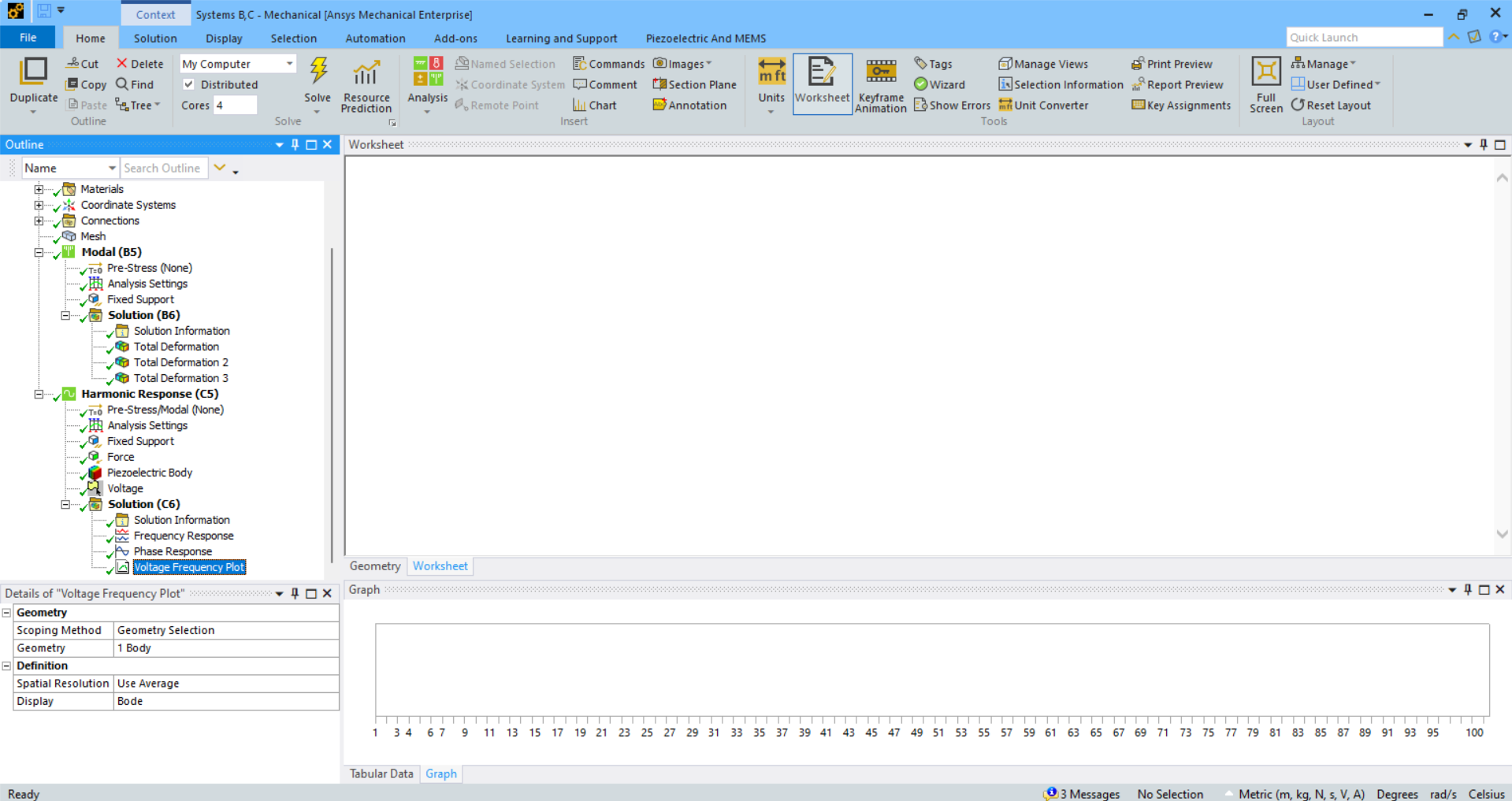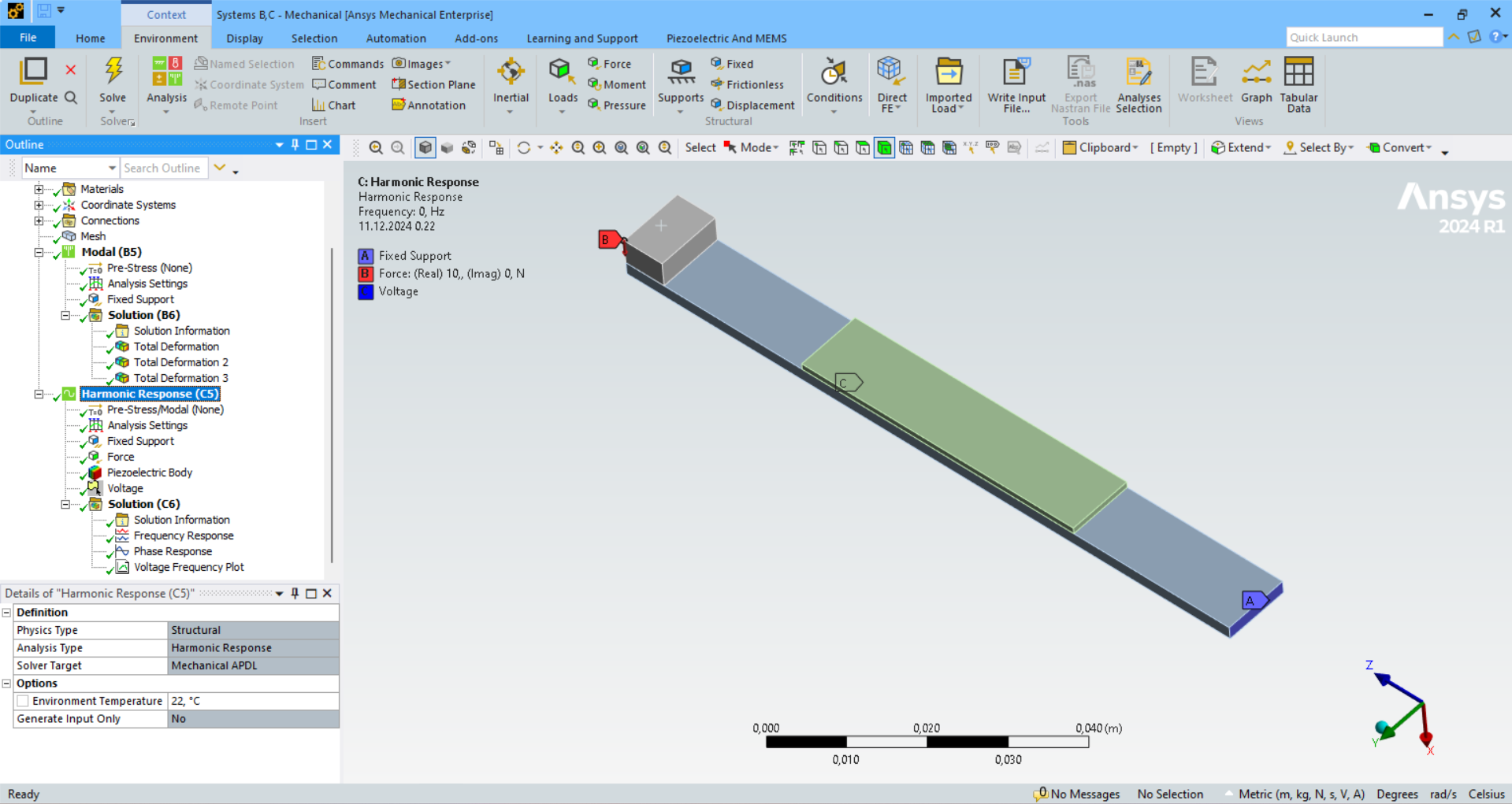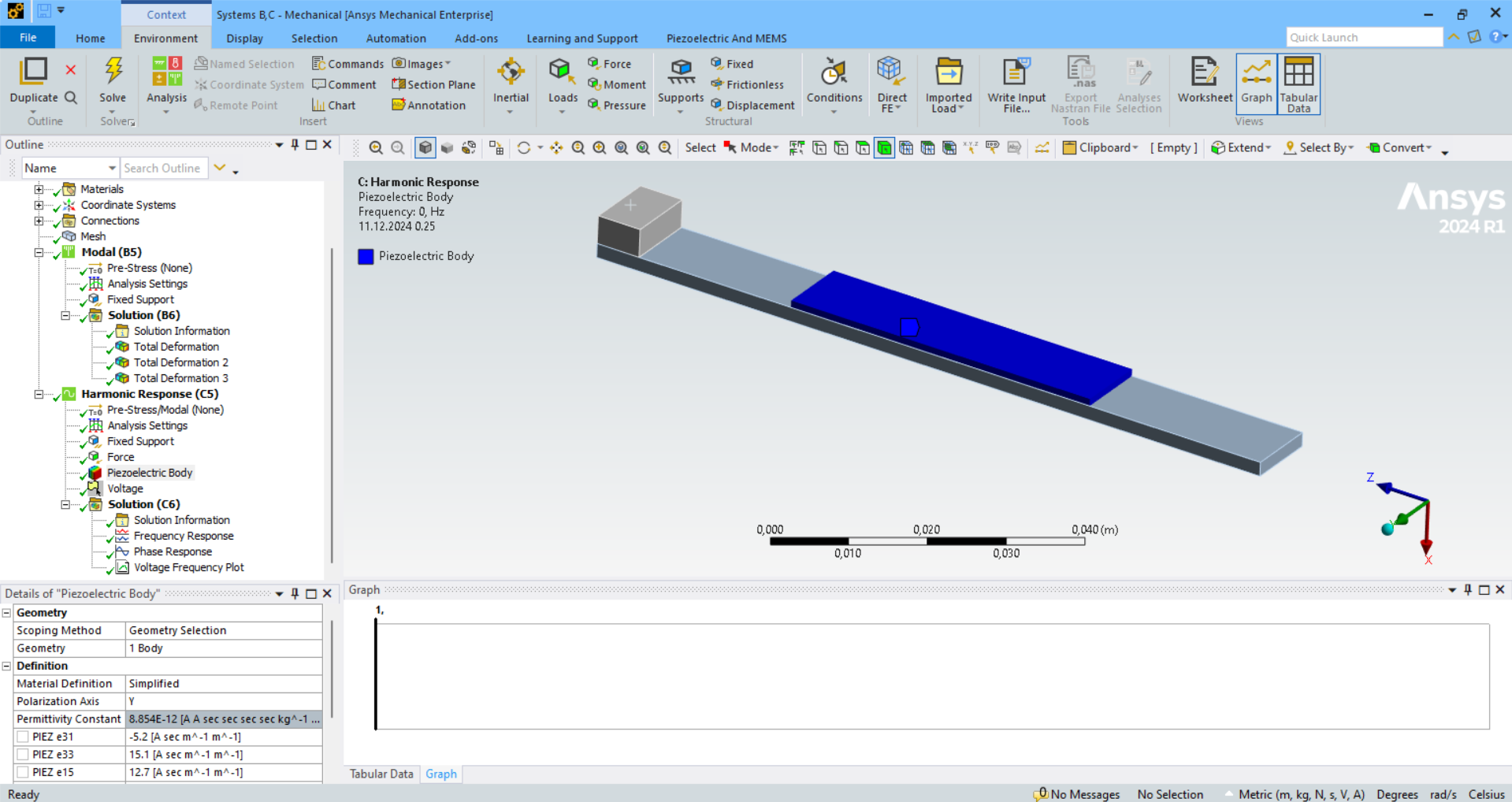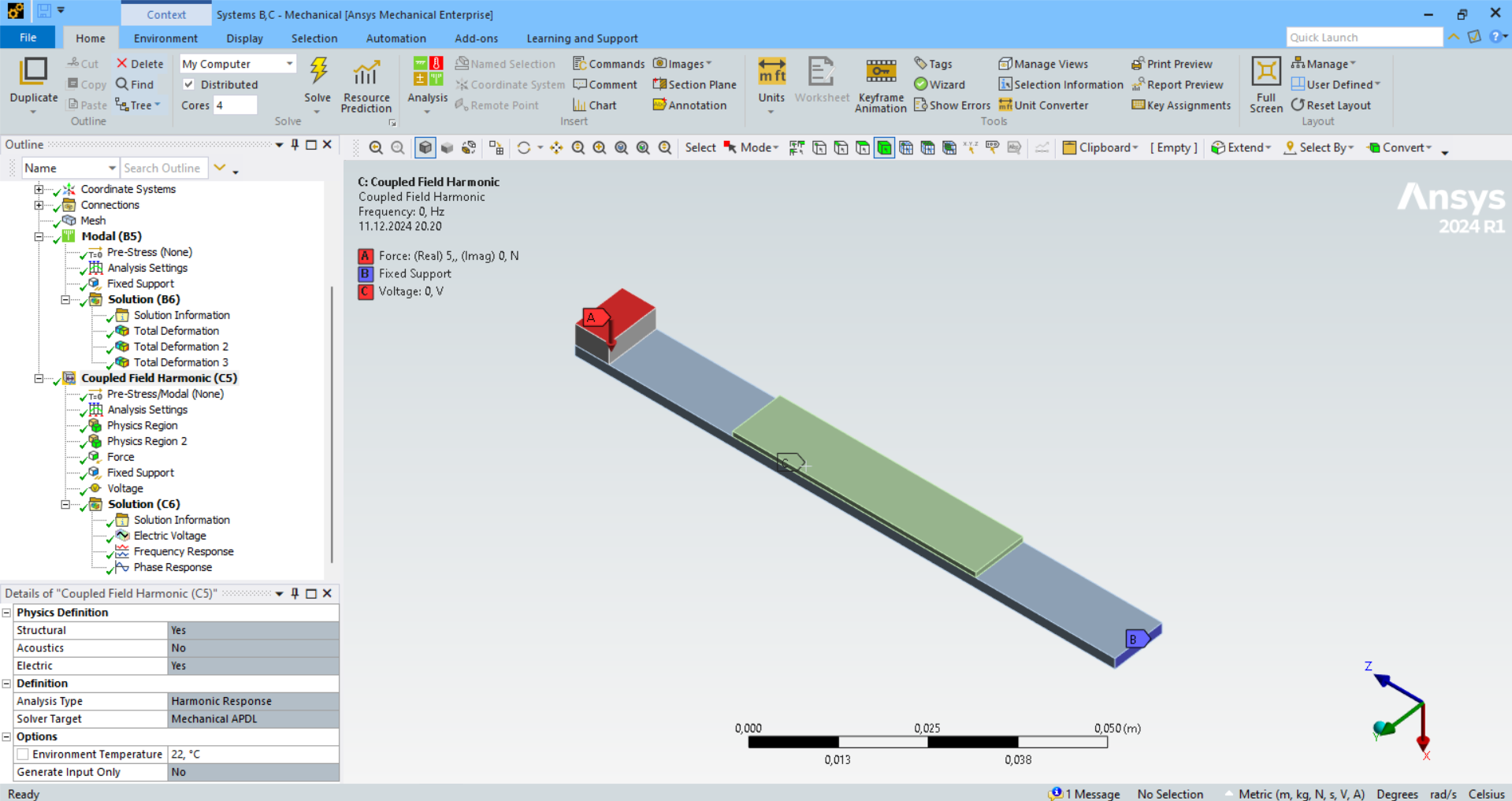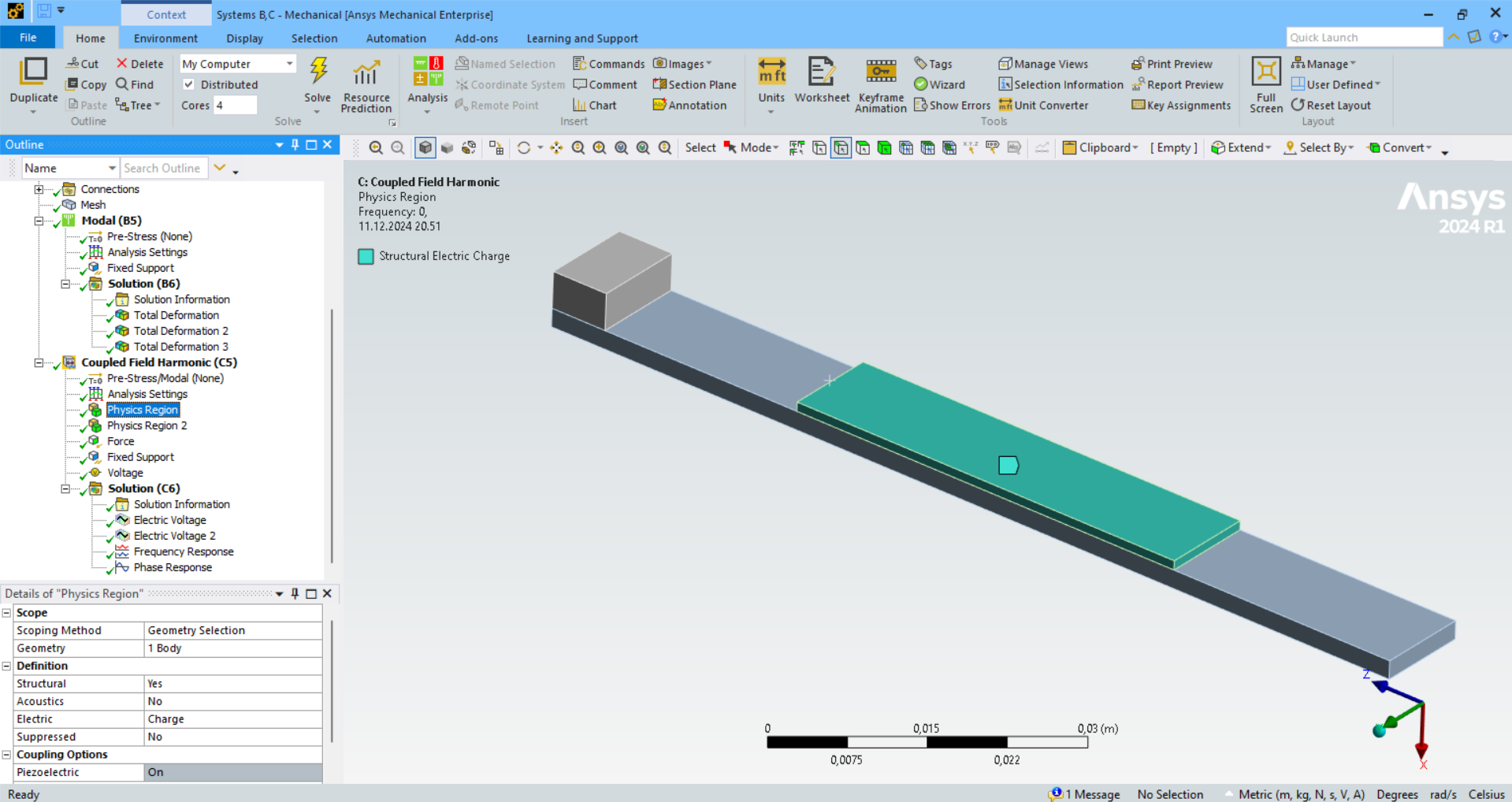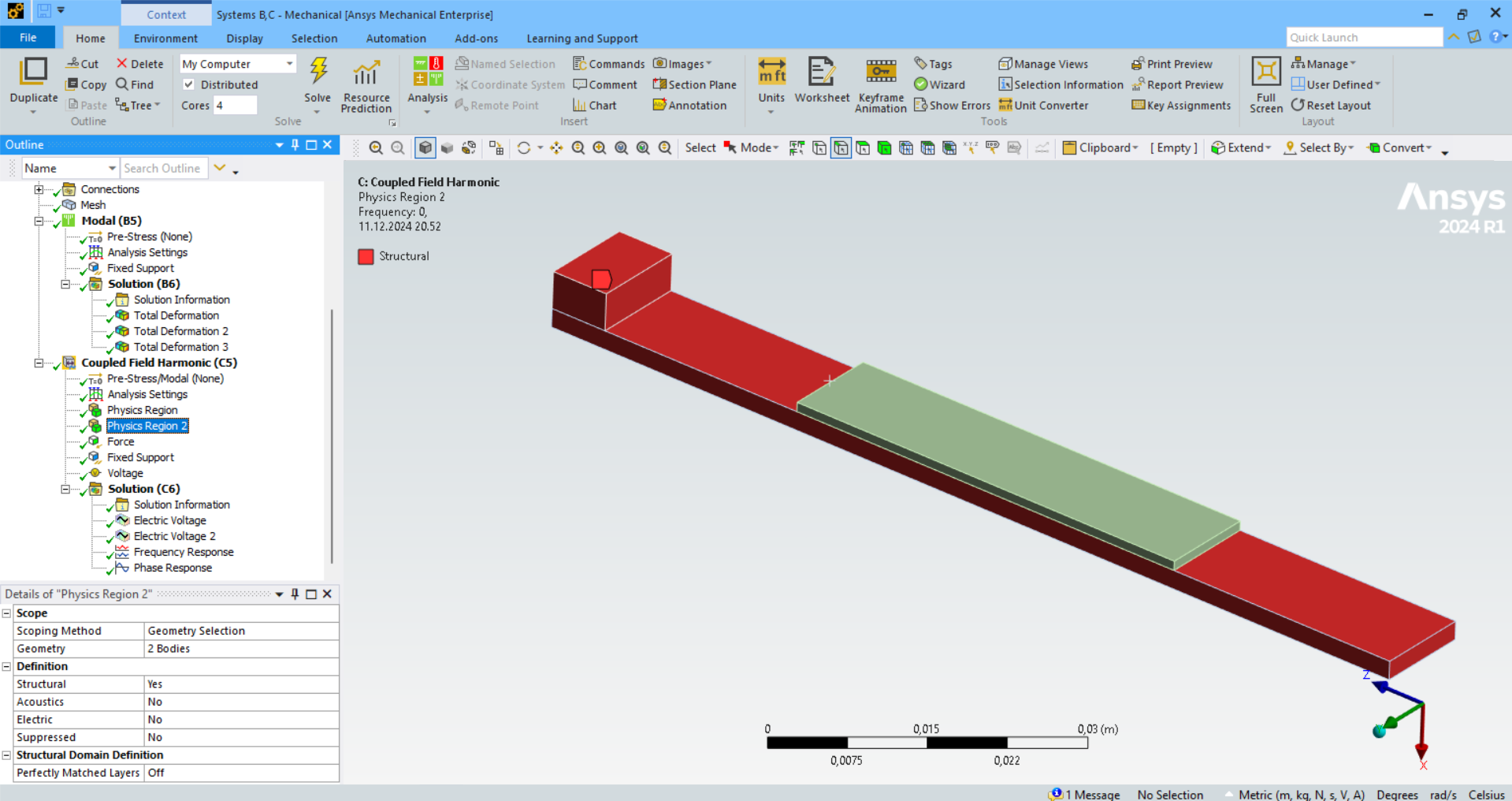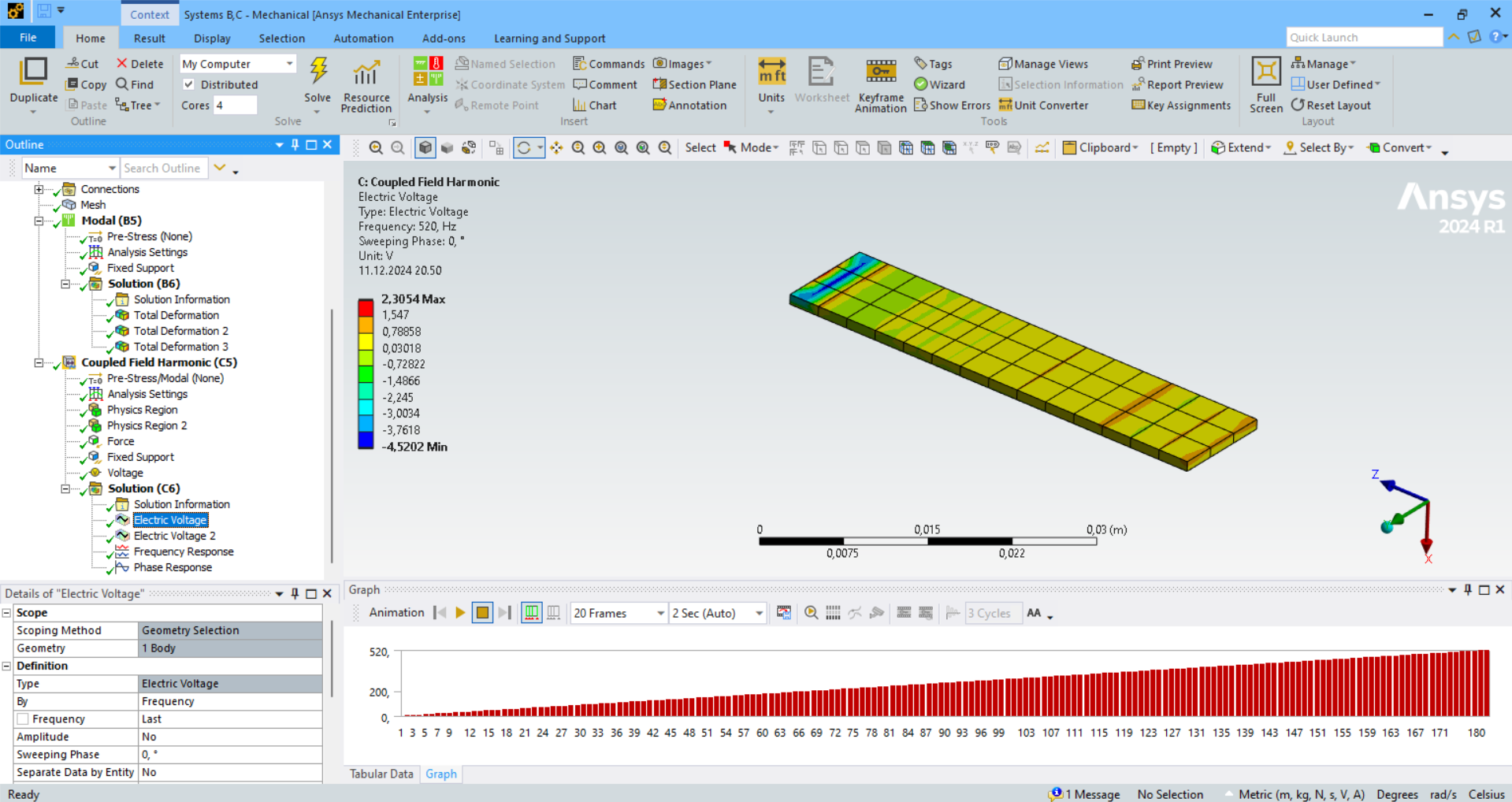TAGGED: mechanical
-
-
December 10, 2024 at 10:26 pm
loant22
SubscriberGood day!
I am attempting to simulate a piezoelectric energy harvester, and I followed this youtube tutorial to the smallest detail, which investigates the voltage created in the piezoelectric body by the resonance frequency of the first simulated mode, but my Ansys does not show the final voltage frequency plot despite simulating it successfully. The worksheet is empty, and there's no tabular data either. No error messages pop up. I have searched the forum and the internet for a post that could nudge me to the right direction, but haven't found anything useful, hence I decided to ask here. How should I approach this issue? Thanks so much to whoever could help me to the right direction.
Here are a couple screenshots of my setup and the empty worksheet. The frequency and phase response graphs work as expected.
-
December 11, 2024 at 9:05 am
ErKo
Ansys EmployeeHi
Not sure why you suddenly use the mems act extension that should not be used.
Use the native coupled field harmonic system like in your previous post.
All the best
Erik
-
December 11, 2024 at 12:07 pm
loant22
SubscriberHi again Erik!
Is the mems extension not supported anymore, or how come it shouldn't be used? I wasn't aware there was a suggestion not to use it any longer.
-
December 11, 2024 at 12:40 pm
ErKo
Ansys EmployeeHi
Yes see the Ansys app store for details where you downloaded it – last supported release is 2020 – so not supported anymore.
Use coupled field native systems like you did in your previous discussion – for your analysis use only one coupled field harmonic system that is all that is needed (for steel plates use structural physics region only, and pzt is str.+electric charge based, just like in the help manual example).
All the best
Erik
-
December 11, 2024 at 6:52 pm
loant22
SubscriberErik,
thank you for letting me know the MEMS extension is out of commission. I have done as you suggested, and got results for electric voltage without problems. I do need to ask for clarification though: In my previous post you stated that in coupled response modal, the electric voltage is just scaled eigenvectors, and hence doesn't represent any real electric voltage in the piezo body. In coupled field harmonic, does the electric voltage result now represent voltage created at resonance frequency during excitement, or is it still just scaled eigenvectors?
Here are a couple screenshots of the new simulation setup and the results.
-
December 12, 2024 at 7:37 am
ErKo
Ansys EmployeeHi
All the results so, e.g., displacement/stress results and voltages are of interest and can be looked at, once and when applying e.g., a structural force (or voltage excitation) in a coupled field harmonic analysis. So they are ok.
For your model we use a Voltage ground or Voltage =0, and on the top of the PZT use a voltage coupling object (otherwise you get this weird voltage plot like shown in your image)
Finally look at adding damping since at resonance the dyn. response is damped controled by damp. and if no damp. results are not very realistic (they go to infinity in theory when no damp.).
https://innovationspace.ansys.com/courses/courses/damping-effects/lessons/intro-to-damping-lesson-1/
All the best
Erik
-
December 13, 2024 at 10:12 am
loant22
SubscriberThank you so much Erik! I have edited the simulation based on your knowledge and it works as expected now. I will review the dampening lectures as well. This problem is now solved.
-
December 13, 2024 at 10:36 am
ErKo
Ansys EmployeeMange tak - happy to help.
Erik
-
- The topic ‘Worksheet Not Showing Voltage Frequency Plot’ is closed to new replies.



-
4597
-
1510
-
1386
-
1209
-
1021

© 2025 Copyright ANSYS, Inc. All rights reserved.

